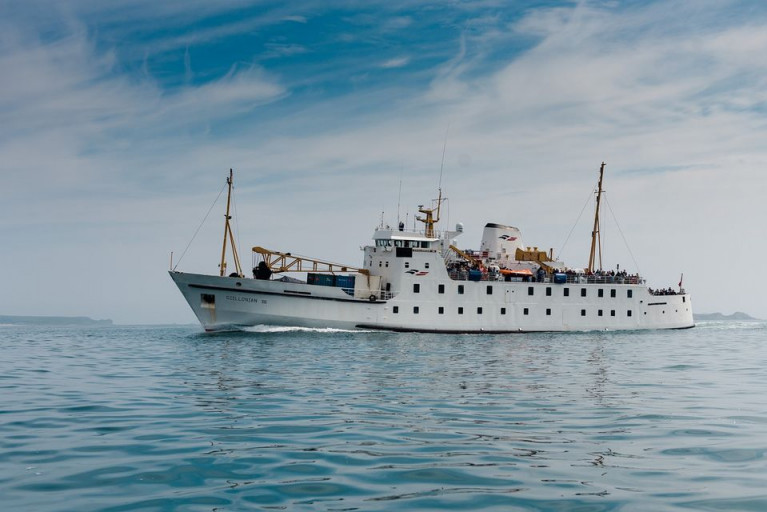Displaying items by tag: UK domestic waters
Ireland-France Ferries Ply in UK Waters Where Plans to Replace Domestic Ferry With More Efficient Ship
As Irish hauliers call for more direct services to mainland Europe given a post-Brexit, it is in these UK domestic waters that plans to replace the Isles of Scilly ferry linking Cornwall are underway likewise of those ferries serving Ireland-France, writes Jehan Ashmore.
The current Isle of Scilly passenger cargo-ferry is the Scillionian III which dates to 1977 having been launched by Appledore Shipbuilders. The north Devon shipyard under Babcock Marine built patrol vessels for the Irish Naval Service and modular construction for the UK Royal Navy's newest aircraft carriers. Recently the facility was acquired by Belfast based Harland & Wolff.
Afloat.ie highlights that this year the Isles of Scilly Steamship (Group) celebrates it's centenary operating the lifeline service for islanders, esssential freight plus seasonal tourists between Penzance Harbour and Hugh Town on St. Mary's. This island is one of the larger isles of the sand-fringed archipelago located between the Altantic Ocean and English Channel.
Scillonian III's passage time, offering scenic Cornish scenery, involves a journey of around 2hrs and 45 minutes, though the company operates airline services too from Land's End, Newquay and Exeter in neigbouring Devon.
In 2017, Scillionian III marked forty years of loyal service and in that time, the 1,255 gross tonnage ferry has covered more than half a million miles, and by 2019 transported more than 4.5 million passengers. The ship has a capacity for 486 and a crew 18 who operate for eight months a year (March-November) and where the 4-deck ferry has developed a loyal and dedicated following of fans given the custom-built vessel remains the longest serving ferry in the Steamship's history.
According to CornwallLive.ie, the veteran vessel is to be replaced by a new ‘greener, more efficient’ passenger ferry.
Ship designer BMT has been awarded a new contract with the Isles of Scilly Steamship Group (ISSG) for vessel design and consultancy services that will provide the “next generation of essential life-line travel and freight services to the Isles of Scilly”.
The ISSG requires a flexible vessel design solution to run between the harbours of Penzance and St Mary’s, in addition to an onward freight supply chain from St Mary’s to the off islands of St Martins, Tresco, Bryher and St Agnes.
A spokesperson for BMT said: “The custom designs will be optimised to meet the future requirements of the islands, and to meet the expanding needs of the local communities, businesses and visitors, to increase tourism, and attract a new generation of visitors to the islands.”
BMT, together with the ISSG, will be working hand-in-hand with the community through public consultation to develop future designs that will benefit and support the residents of the Isles of Scilly for years to come.
More reading on plans for the newbuild development click here.






























































